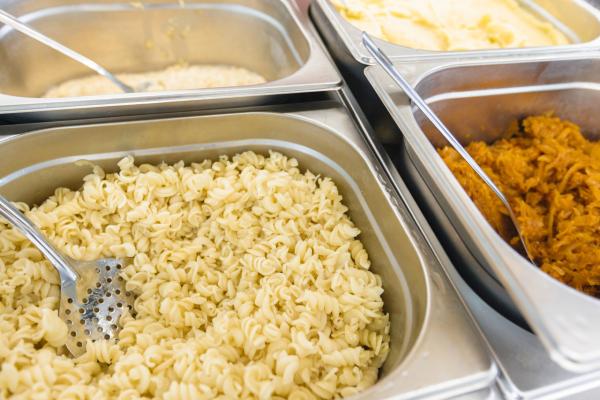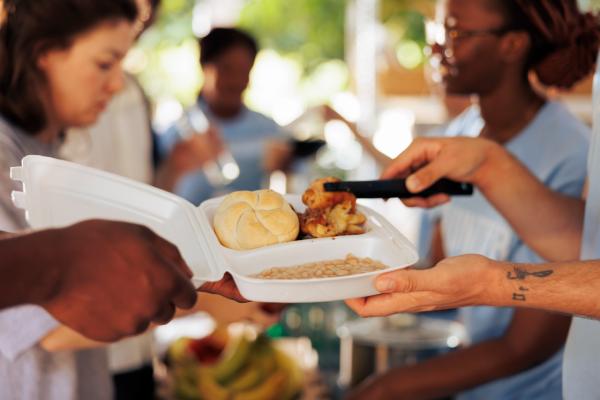The provision of hot meals in schools across Ireland represents a wonderful opportunity to support children's nutrition, concentration, and overall wellbeing. However, with this opportunity comes significant responsibility. School kitchens must operate to the highest standards of food safety to protect vulnerable young learners from foodborne illness. Unlike commercial food establishments, schools serve a particularly sensitive population – children whose immune systems may be developing and who rely entirely on adults to keep them safe.
Food safety in educational settings encompasses far more than simply cooking food to the right temperature. It involves understanding the complete journey of food from delivery through storage, preparation, cooking, and service. Every stage presents potential hazards that must be identified and controlled. Kitchen hygiene standards must be maintained consistently. Allergy management in schools requires particular vigilance, as the consequences of cross-contamination or mislabelling can be catastrophic.
Table of Contents
- Introduction to Food Safety in Schools
- Common Food Safety Hazards
- Best Practices for Food Preparation
- Ensuring Safe Food Storage
- Training and Education for Staff
- Frequently Asked Questions
- Conclusion
1. Introduction to Food Safety in Schools
The foundation of any successful school meal programme rests upon uncompromising food safety standards. Schools that serve hot meals to students assume responsibility for protecting some of society's most vulnerable members, making the importance of proper food safety management impossible to overstate.
i. Importance of Food Safety
Food safety in schools protects some of our most vulnerable citizens – children who depend entirely on adults to ensure their wellbeing. When schools serve hot meals, they assume responsibility for every aspect of food safety, from purchasing ingredients from reputable suppliers through to ensuring that the final meal served is safe, nutritious, and free from contaminants. Foodborne illness in children can be particularly severe, leading not only to immediate suffering but potentially to longer-term health consequences.
Beyond the obvious health implications, food safety in schools affects learning outcomes, attendance, and the overall school environment. Children who become ill from contaminated food may miss days or weeks of education. Outbreaks can affect multiple students simultaneously, creating staffing challenges. The reputational impact on schools can be significant, potentially affecting enrolment and community trust.
The economic implications of poor food safety extend beyond immediate costs. Prevention through proper training, systems, and vigilance is always more cost-effective than dealing with the aftermath of food safety failures. Investing in comprehensive food safety training for kitchen staff represents excellent value, protecting both students and the school's resources.
ii. Overview of Food Safety Regulations in Ireland
Irish food safety regulations provide a comprehensive framework designed to protect public health whilst supporting food businesses in maintaining high standards. These regulations apply equally to school kitchens as they do to restaurants and other food service establishments. Current legislation is based on European Union food safety requirements, which set out fundamental principles that all food businesses must follow.
The Food Safety Authority of Ireland serves as the regulatory body responsible for enforcing food safety standards. Schools serving hot meals must register with their local Environmental Health Service and are subject to unannounced inspections to verify compliance. These inspections assess various aspects including premises hygiene, food handling practices, temperature controls, and staff training.
Current legislation requires that all food businesses, including school kitchens, implement a food safety management system based on HACCP principles. This systematic approach involves identifying potential hazards, determining critical control points, establishing control measures, monitoring these controls, and maintaining appropriate documentation.
Compliance isn't optional, it's a legal requirement with potential consequences for non-compliance. Understanding and implementing proper food safety practices protects schools from regulatory action whilst, more importantly, keeping children safe.

2. Common Food Safety Hazards
School kitchens face numerous potential food safety hazards that must be identified and controlled to ensure the safety of meals served to students. Understanding these hazards enables kitchen staff to implement appropriate control measures and maintain necessary vigilance.
i. Biological Hazards
Biological hazards represent the most common cause of foodborne illness and must be carefully controlled in school kitchen environments. These hazards include bacteria, viruses, parasites, and fungi that can contaminate food and cause illness when consumed.
Pathogenic bacteria such as Salmonella, Campylobacter, E. coli, and Listeria cause millions of cases of food poisoning annually. The "danger zone" between 5°C and 63°C provides ideal conditions for bacterial growth, which is why temperature control is absolutely critical. Under optimal conditions, some bacteria can double in number every twenty minutes.
Viruses, particularly norovirus, represent another significant biological hazard. Unlike bacteria, viruses cannot multiply in food but can be transmitted through contaminated food or surfaces. Hand hygiene is the single most important control measure for viral hazards. Kitchen staff must understand that they can be infectious before showing symptoms, making it crucial that anyone with symptoms of vomiting or diarrhoea stays away from food handling duties entirely.
Cross-contamination occurs when harmful organisms are transferred from one food item to another, typically from raw foods to ready-to-eat foods. Preventing cross-contamination requires strict segregation of raw and ready-to-eat foods, dedicated equipment and preparation areas, rigorous cleaning procedures, and constant vigilance.
Allergy awareness in schools is paramount, as reactions can range from mild discomfort to life-threatening anaphylaxis. The fourteen major allergens identified in current legislation must be carefully managed through proper labelling, communication with parents and students, segregation during preparation, and thorough staff training.
ii. Chemical Hazards
Chemical hazards in food operations may be less common than biological hazards but can be equally dangerous. These hazards include cleaning chemicals, pesticides, food additives used incorrectly, and toxic substances that might accidentally contaminate food.
All cleaning products should be stored separately from food and food preparation areas, ideally in a locked cupboard with clear labelling. Kitchen staff must be trained in the correct dilution and application of cleaning products. Chemicals should never be decanted into unmarked containers, as this creates serious risk of accidental contamination or misuse.
Food labelling practices must be rigorous to prevent issues with ingredients that might be harmful to certain individuals. Every container in a school kitchen should be clearly labelled with its contents, opening or preparation date, and when appropriate, instructions for use.
3. Best Practices for Food Preparation
Proper food preparation forms the cornerstone of food safety in school kitchens. From ensuring foods reach safe cooking temperatures to preventing cross-contamination during preparation, every step requires attention and proper technique.
i. Safe Cooking Temperatures
Cooking food to safe temperatures is one of the most critical control points in preventing foodborne illness. Heat kills most pathogenic organisms, but only if food reaches and maintains temperatures sufficient to destroy them.
Poultry must reach a minimum core temperature of 75°C. Minced meat products should also reach 75°C throughout. Reheated food must reach 75°C throughout to ensure any bacteria that may have grown during storage are destroyed.
Effective temperature measurement requires proper equipment and technique. Probe thermometers should be calibrated regularly, cleaned and sanitised between uses, and inserted into the thickest part of the food. Temperature readings should be recorded, creating documentation that demonstrates due diligence.
Cooling procedures for foods that will be refrigerated for later use are equally important. Safe lunch preparation requires that cooked food destined for later service is cooled rapidly, ideally within ninety minutes, to below 5°C.
ii. Cross-Contamination Prevention
Preventing cross-contamination requires a systematic approach encompassing physical segregation, proper equipment use, rigorous cleaning procedures, and constant awareness from all kitchen staff. The principle is simple: keep raw and ready-to-eat foods completely separate at all stages.
Physical segregation begins with storage. Raw meat, poultry, and fish should be stored on the lowest shelves of refrigeration units, where they cannot drip onto other foods. Ready-to-eat foods should occupy higher shelves.
Colour-coded equipment systems have become industry standard for cross-contamination prevention. Chopping boards, knives, containers, and cloths designated for raw meat should never be used for ready-to-eat foods. This system only works if staff understand and consistently follow it, making training essential.
Hand hygiene represents perhaps the most important cross-contamination control. Kitchen staff must wash hands thoroughly with soap and warm water after handling raw foods, after touching their face or hair, after using the toilet, after handling waste, and before handling ready-to-eat foods.
4. Ensuring Safe Food Storage
Proper food storage is essential for maintaining food safety and quality in school kitchens. From maintaining correct refrigeration temperatures to managing shelf life effectively, storage practices directly impact the safety of meals served to students.
i. Correct Refrigeration Methods
Refrigeration slows bacterial growth but doesn't stop bacterial multiplication entirely and certainly doesn't kill bacteria. Understanding how to use refrigeration effectively is crucial for maintaining food safety.
Refrigeration units should maintain temperatures between 1°C and 4°C for optimal food safety. Regular temperature monitoring using calibrated thermometers is essential, with readings recorded to demonstrate compliance. Most commercial refrigeration units have built-in temperature displays, but these should be verified periodically with separate probe thermometers.
Maintaining kitchen cleanliness extends to refrigeration units. Regular cleaning prevents build-up of spills, mould growth, and pest access. Overloading refrigerators restricts airflow and prevents proper cooling. Hot food should never be placed directly into refrigeration, as this raises the temperature of the entire unit.
Organisation within refrigeration units serves both food safety and operational efficiency. Following the "first in, first out" principle ensures older stock is used before newer deliveries, reducing waste and ensuring food is used within safe timeframes.
ii. Shelf-Life Management
Understanding and managing food shelf life prevents both food waste and food safety issues. For pre-packaged foods, manufacturers provide "use by" or "best before" dates which guide safe usage.
"Use by" dates appear on highly perishable foods that could become unsafe relatively quickly. These dates are safety limits, not quality indicators. Food should not be used after its use by date, even if it appears and smells fine.
Prepared foods that don't have manufacturer dates require careful management. Most cooked foods, when properly cooled and refrigerated, remain safe for up to three days. However, some foods have shorter safe periods.
Regular stock rotation prevents food from languishing in storage past safe periods. Daily or weekly checks of refrigerated and dry storage identify items approaching their use by dates, allowing them to be used promptly or safely disposed of.

5. Training and Education for Staff
Comprehensive staff training forms the foundation of effective food safety management in school kitchens. Well-trained staff understand not just what procedures to follow but why those procedures matter.
i. Importance of Food Safety Training
Current legislation requires that food handlers receive appropriate supervision, instruction, and training for the work they perform. For school kitchens, this means ensuring all staff understand fundamental food hygiene principles and the specific procedures used in their kitchen.
The benefits of comprehensive food safety training extend beyond compliance. Trained staff make fewer mistakes, work more efficiently, waste less food, and contribute to a positive safety culture. They're more likely to identify potential hazards before they cause problems and more confident in their ability to maintain standards.
ii. Resources for Staff Training
SafeHands Health & Safety Solutions offers specialised food safety training for school kitchen staff, designed to meet current legislation requirements whilst being practical and relevant to the school environment. Training is delivered at the client's venue or on-site at the school, allowing staff to learn in their actual working environment.
To arrange staff training for food safety, schools can submit an enquiry through the SafeHands website. Scheduling depends on trainer availability, allowing flexibility to find times that work around the school calendar and kitchen schedules. Payment is required upfront and can be made via Stripe, bank transfer, or over the telephone. The full training fee is payable when booking, with no deposit options or payment plans available.
6. Frequently Asked Questions
What food safety training services do you offer for schools in Ireland?
SafeHands provides comprehensive food safety training specifically tailored for school kitchen environments. Our training covers all essential aspects of safe food handling including personal hygiene, cross-contamination prevention, temperature control, allergen management in schools, and HACCP principles. Training is delivered by qualified instructors and can be customised to address the specific challenges of school meal preparation.
How can I book a food safety training session for my school, and what is the notice period required?
Booking food safety training is straightforward, simply submit an enquiry through our website with details of your requirements. Scheduling depends on trainer availability, so we recommend contacting us as early as possible to secure your preferred dates. There isn't a specific minimum notice period required, though earlier booking generally provides more scheduling options.
What payment methods are accepted for booking food safety training services?
We accept several convenient payment methods including Stripe, bank transfer, and payment over the telephone. For bank transfer payments, we'll email you an invoice containing our bank details. Payment for training courses is required in full when booking, with no deposit options or payment plans available.
Are there any packages available for booking multiple sessions for different schools?
We're happy to discuss training requirements for multiple schools or repeated sessions. Contact us with details of your requirements, and we'll work with you to create a training solution that meets your needs.
How do you ensure that your food safety training facilities comply with Irish regulations?
Our training is delivered at your venue or on-site at your school. This ensures that training occurs in the actual environment where staff will apply their knowledge and skills. All our trainers hold appropriate qualifications and deliver content that meets current legislation requirements and follows Food Safety Authority of Ireland guidance.
7. Conclusion
Food safety in schools represents a critical responsibility that extends far beyond simple meal preparation. Schools serving hot meals to students must approach this responsibility with the seriousness it deserves, recognising that the health and wellbeing of children depends on unwavering commitment to food safety standards.
Effective food safety management in schools combines comprehensive staff training with well-designed systems and a culture of continuous improvement. Kitchen staff must understand not just what procedures to follow but why those procedures matter. They need practical skills in safe food handling, temperature control, cleaning procedures for kitchens, and allergy management.
SafeHands stands ready to support schools in meeting their food safety training needs. With practical, relevant training delivered by qualified professionals in your own kitchen environment, we help school kitchen staff develop the knowledge, skills, and confidence needed to prepare safe, nutritious meals for students every day. Contact SafeHands today to arrange food safety training that makes a genuine difference in your school kitchen.

